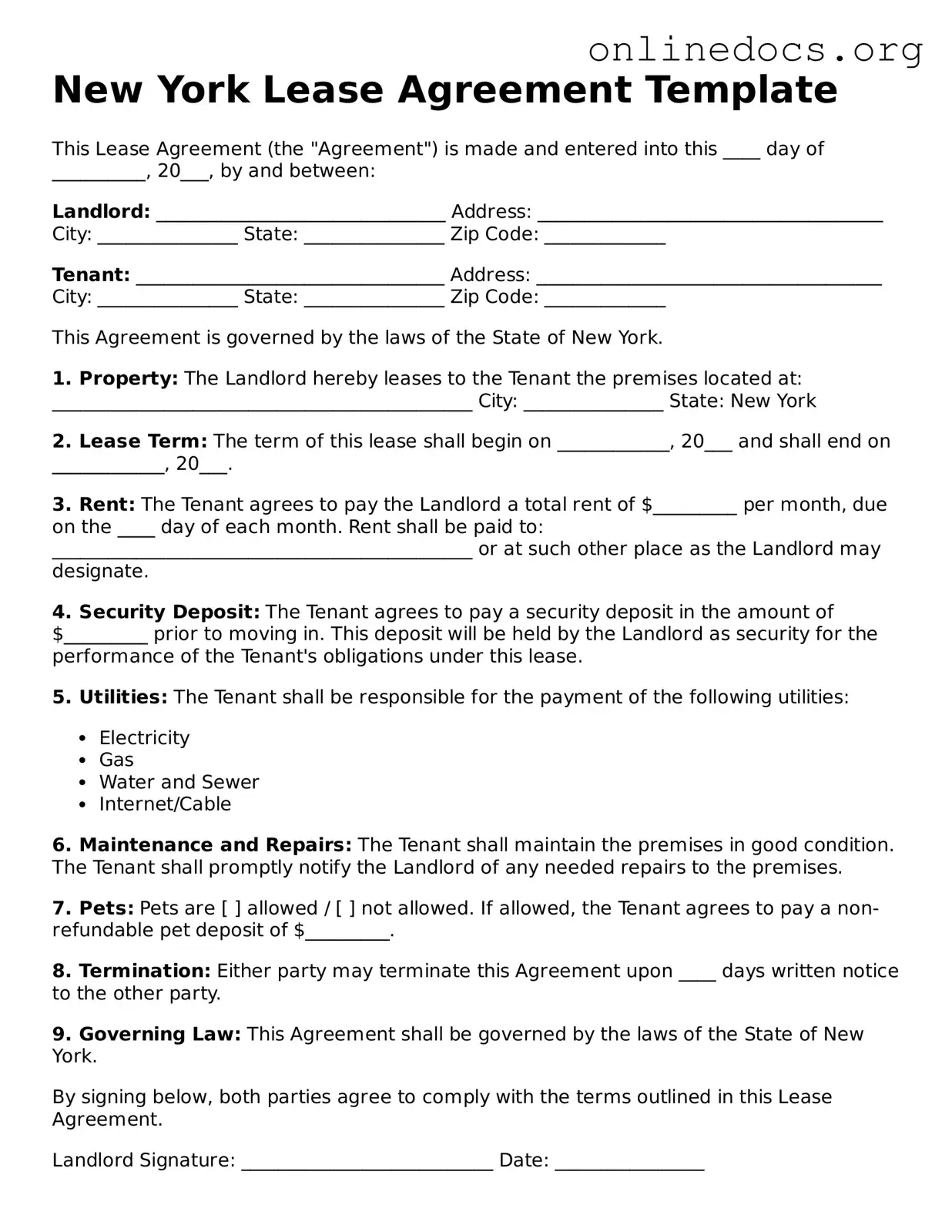The New York Lease Agreement form shares similarities with the Rental Agreement. Both documents outline the terms under which a tenant may occupy a property, detailing the duration of the tenancy, rent payment schedules, and responsibilities of both parties. While a lease typically spans a longer term, such as a year, a rental agreement can often be more flexible, allowing for month-to-month arrangements. This makes both documents essential for establishing clear expectations and legal protections for landlords and tenants alike.
Another document that resembles the New York Lease Agreement is the Sublease Agreement. This form is used when a tenant wishes to rent out their leased property to another individual. Like the primary lease, the sublease outlines the terms of occupancy, including rent, duration, and responsibilities. Both agreements require the original landlord’s consent, ensuring that the rights and obligations of all parties are respected and maintained throughout the subleasing process.
The Commercial Lease Agreement also bears resemblance to the New York Lease Agreement, but it is specifically tailored for business use. This document includes terms relevant to commercial properties, such as zoning regulations, permitted uses, and maintenance responsibilities. Both agreements serve to protect the interests of the property owner while providing a framework for the tenant's use of the space, albeit in different contexts—residential versus commercial.
The Month-to-Month Rental Agreement is similar to the New York Lease Agreement in that it establishes a tenancy but offers more flexibility. This type of agreement allows either party to terminate the arrangement with short notice, typically 30 days. Like a standard lease, it outlines rent, security deposits, and other essential terms, but the shorter commitment period appeals to those seeking less permanence in their housing situation.
The Roommate Agreement is another document that aligns closely with the New York Lease Agreement. While a lease is between a landlord and a tenant, a roommate agreement is a contract among individuals sharing a rental unit. It specifies each roommate’s responsibilities, including rent payment, utility sharing, and household chores. Both documents aim to foster clear communication and minimize disputes among parties living together.
The Lease Option Agreement is also comparable to the New York Lease Agreement, as it includes a rental component with the added feature of an option to purchase the property. This document allows tenants to rent a property with the possibility of buying it later. It combines elements of leasing and real estate purchase, providing tenants with flexibility and landlords with potential buyers.
When handling the transfer of personal property ownership, it is also beneficial to understand the importance of the California Bill of Sale form, a legal document that plays a pivotal role in safeguarding the interests of both buyer and seller. To learn more about this essential document and access useful templates, visit All Templates PDF.
The Rent-to-Own Agreement is similar in that it allows tenants to rent with the intent to purchase. This document details the rental terms while also outlining the purchase price and conditions for buying the property. Like the Lease Option Agreement, it serves as a bridge between renting and owning, appealing to those who may not be ready to buy immediately but wish to work towards homeownership.
Lastly, the Lease Purchase Agreement is akin to the New York Lease Agreement, as it combines leasing and purchasing into one contract. This document typically requires tenants to purchase the property at the end of the lease term. It provides a clear timeline and conditions for the sale, ensuring that both the landlord and tenant understand their obligations. This agreement is beneficial for those who want to secure a property while preparing for a future purchase.
